Written by Helen Brooke, Illustrated by Allison Dumper
The day I started high school my family moved to a property with more than a dozen well-established grapevines. Tending them became my job. A manual on vine care soon taught me that pruning is crucial.
If the gardener skips pruning for just one year, a grapevine develops an overabundance of leaves and poor-quality grapes. Tightly packed leaves block sun and air circulation, leading to disease. The grapes meanwhile may be many, but with the plant’s resources divided, they are small, sour, and may not ripen before the end of growing season. In other words, an untended vine easily becomes a tangled pile of diseased leaves with questionable fruit.
If the gardener were to neglect pruning the vine for several years in a row, it would become woody, unfruitful, and die.
So how does the gardener prune? The manual laid out technical instructions: sterilize equipment, determine the health of the vine, preserve so many branches per linear foot, cut at this angle. It sounded straightforward. In practice, though, I discovered pruning to be a creative process, an art form.
Pruning must be done several times throughout the year: early spring, late spring, and throughout summer.
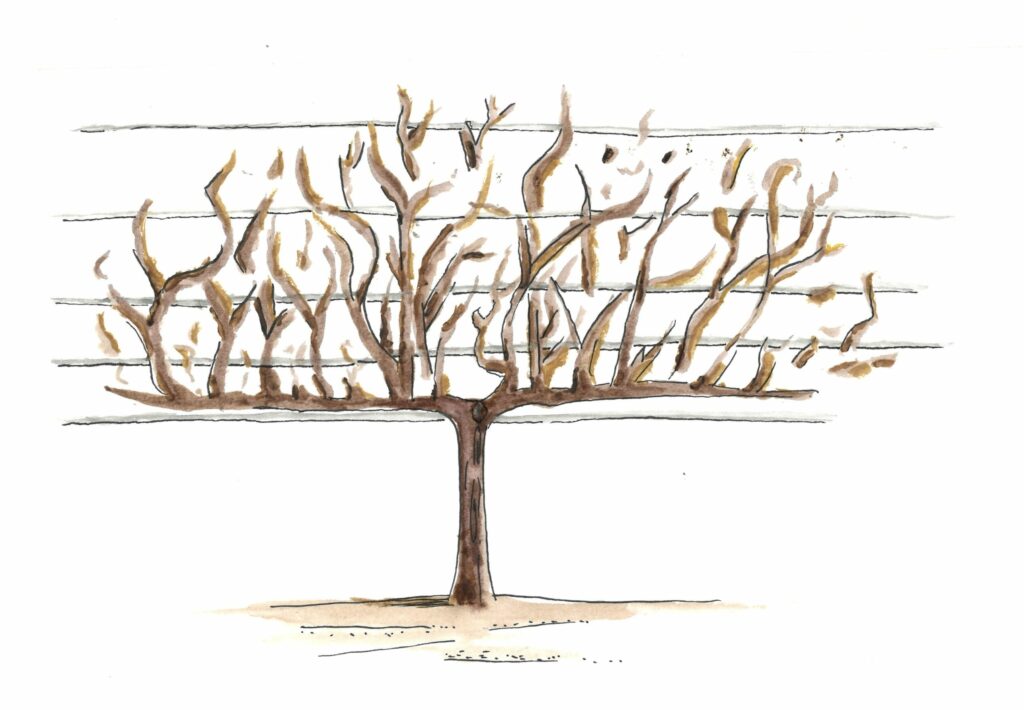
The first pruning is in early spring, just before sap starts flowing and when the vine is dormant. At this time, the gardener drastically prunes the grapevine, removing 70 to 90% of the previous year’s growth. He leaves only the main trunk and small, strategically placed sections of the most vigorous branches from last year’s growth. Those branches will not grow again, but their nodes (where leaves once attached) will send out new branches as the weather warms.
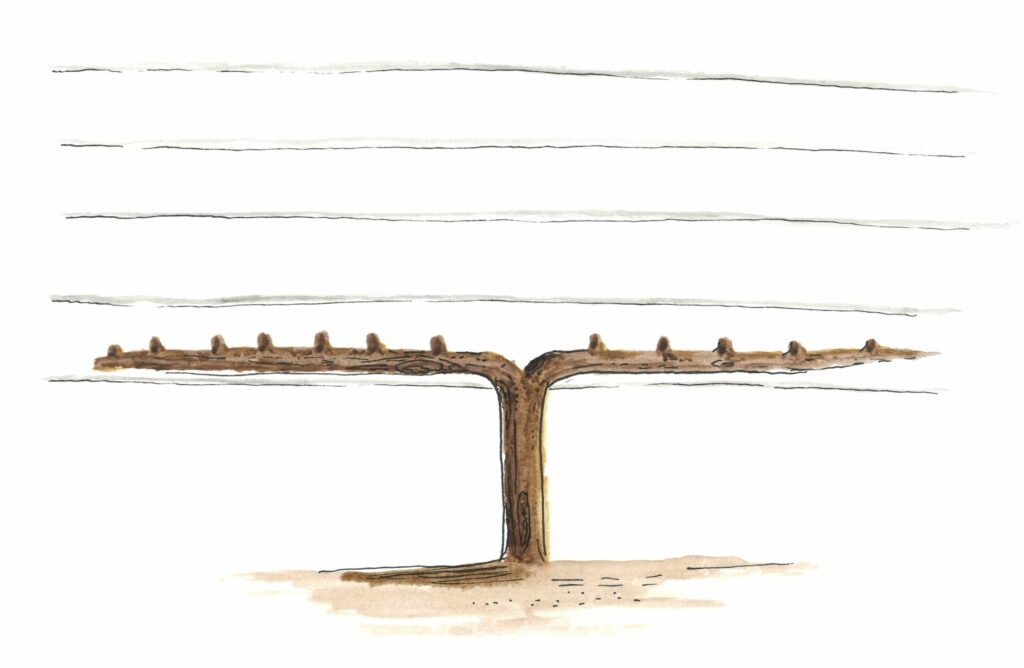
A couple months after this first pruning comes late spring pruning. 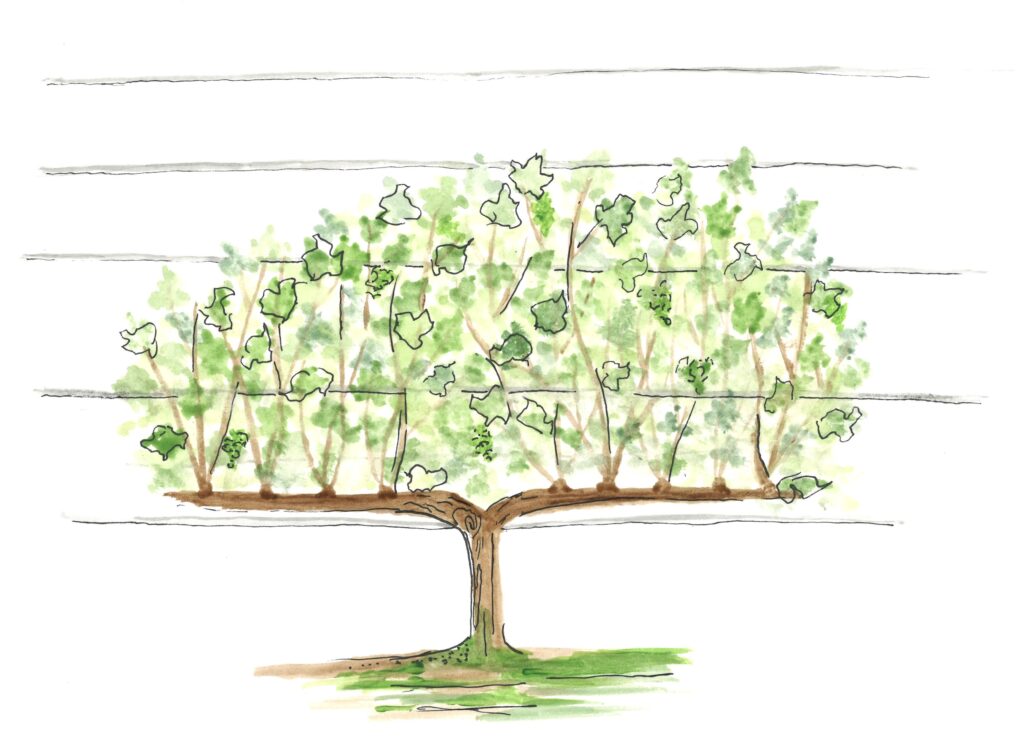 At this point the vine has leafed out, flowered, and formed tiny grape clusters. Each node left in the winter pruning may have generated two or three new branches. The gardener sorts through these and snaps off whichever branches do not have fruit. These he carries away so they do not spread disease to the vine as they decompose.
At this point the vine has leafed out, flowered, and formed tiny grape clusters. Each node left in the winter pruning may have generated two or three new branches. The gardener sorts through these and snaps off whichever branches do not have fruit. These he carries away so they do not spread disease to the vine as they decompose.
 The branches that do have fruit he keeps and trains to grow in an orderly way, often on a trellis. This thinning encourages the vine to send more resources to the fruit and allows better air circulation.
The branches that do have fruit he keeps and trains to grow in an orderly way, often on a trellis. This thinning encourages the vine to send more resources to the fruit and allows better air circulation.
In early summer the gardener visits the vines again.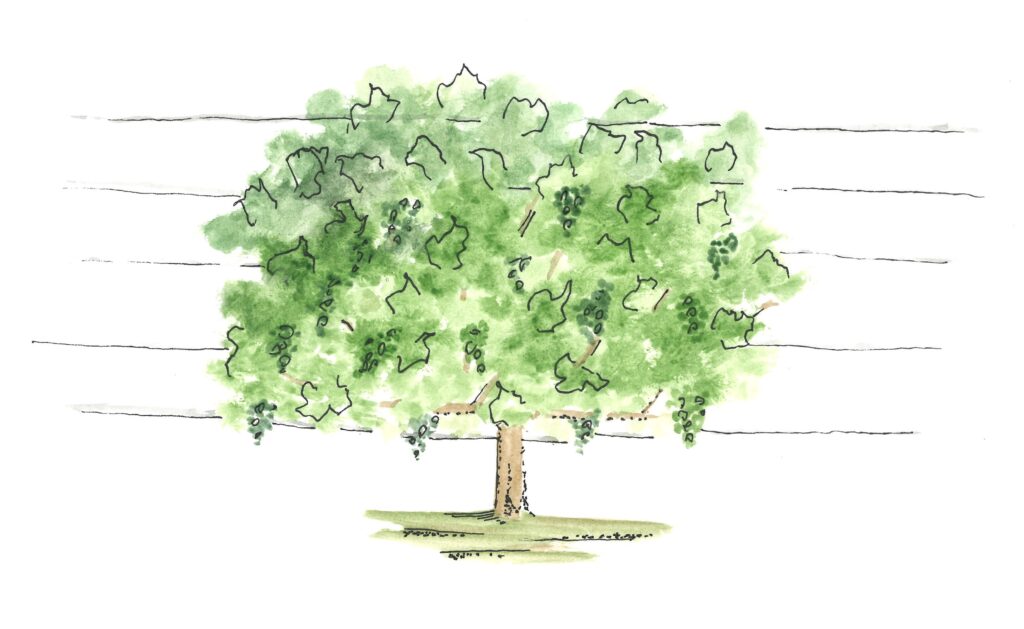
Wherever new fruitless branches have grown, he cuts those off, leaving perhaps a leaf or two at its base to help shade the fruit. On the branches that do have fruit, the gardener finds the furthest out cluster of grapes, counts several leaves past the cluster, and trims off the rest of the branch. This pruning directs the sugars and energy of the plant to go into the fruit instead of into continued vining growth. If the branch has formed more fruit than it can carry, the gardener also prunes off the excess clusters to ensure that the remaining fruit is plump and sweet. He also removes some of the older larger leaves that block sunlight and air flow, as well as diseased sections. These removed materials he carries away from the vine.
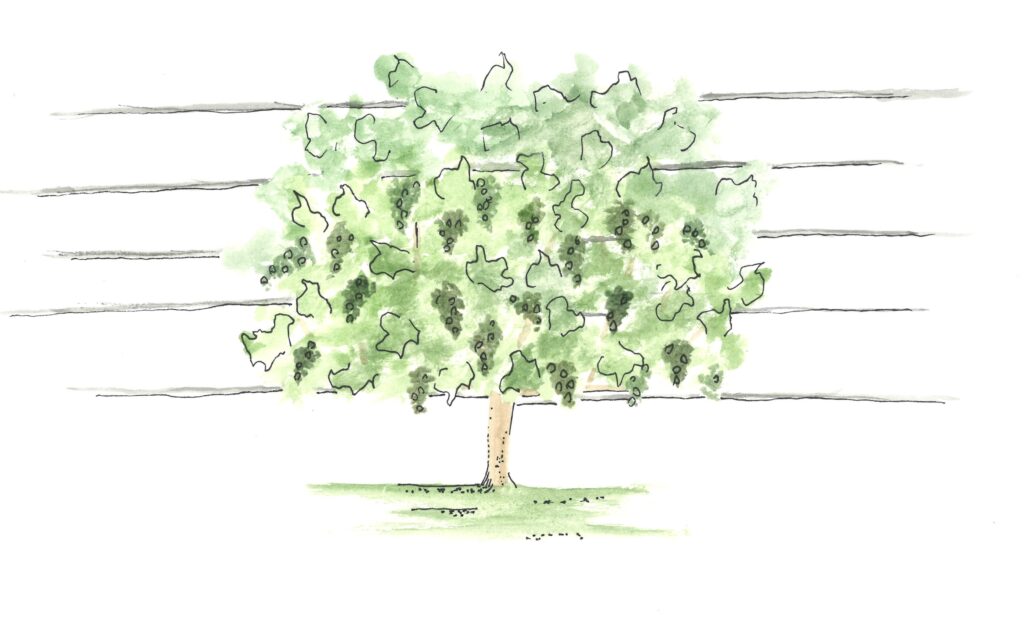
Throughout summer, the gardener continues to visit his vine and remove excess vegetation, keeping the vine healthy and its resources focused on developing fruit.
The well-tended vine produces abundant, flavorful, juicy fruit. At the end of summer, the gardener harvests the sweet, plump grapes: a joyful reward after long labor.
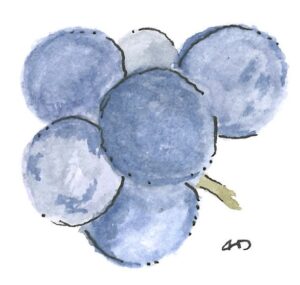
After harvest, the energy of the plant – no longer needed for producing fruit – shifts to strengthening the wood and storing energy for the next year. As the weather cools, the leaves fall and the vine enters dormancy. The next year it will be ready to be pruned and to produce again.
For three years I followed these steps. Soon I learned to tell whether a branch would produce fruit by the feel of the wood. I grew confident in chopping away dead wood and shaping the vine for health and fruitfulness. I rejoiced to watch clusters of plump grapes ripen and to taste the fruit I had tended. A well-pruned vine is beautiful.
Author: Helen Brooke grew up in the Middle East and moved to the Midwest as an adult. She has been a member of Resurrection for over a decade.
 Illustrator: Allison Dumper grew up in the greater Wheaton area and has attended Rez her whole life. She has participated in various RezArts events and contributed visual arts pieces.
Illustrator: Allison Dumper grew up in the greater Wheaton area and has attended Rez her whole life. She has participated in various RezArts events and contributed visual arts pieces.
 This year’s RezArts Festival theme is “I am the vine; you are the branches.” We invite you, no matter your age or experience, to draw, write, or create a tune reflecting on how we relate to Jesus as branches in the vine, tended by the Father. Learn more here.
This year’s RezArts Festival theme is “I am the vine; you are the branches.” We invite you, no matter your age or experience, to draw, write, or create a tune reflecting on how we relate to Jesus as branches in the vine, tended by the Father. Learn more here.



